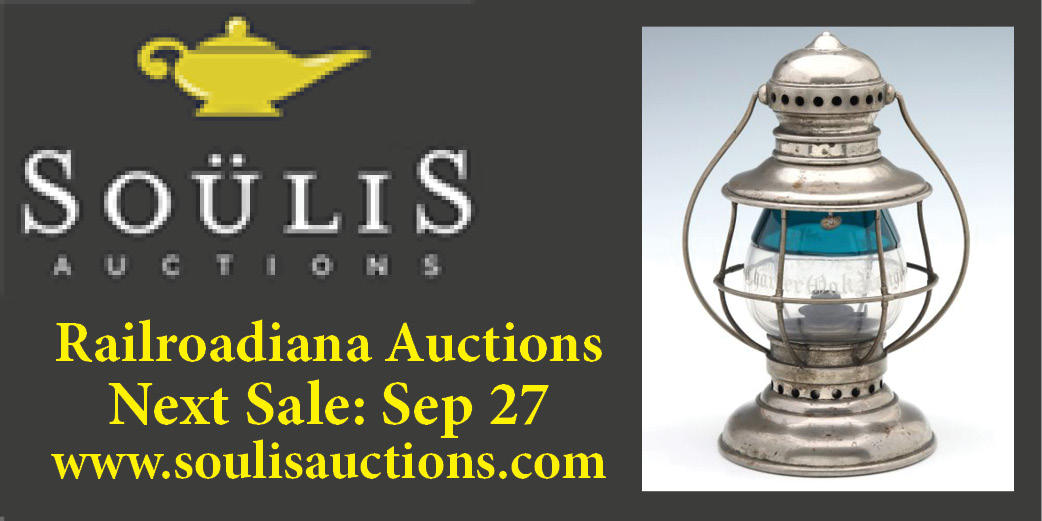


History of Key, Lock & Lantern
In the Spring of 1966, railroad historian and author Paul Pietrak of North Boston, NY concluded that there should be a publication for railroad hardware collectors. He named it "Key, Lock & Lantern". The first issue was a single sheet (two sides) numbered Issue "0" which was distributed free to test the market. Paul then produced eight additional quarterly issues before turning over the editorship in the Spring of 1968 to Walter L. George of Commerce, Texas. Walter put out another nine issues before passing the publication along to Bill Lindblom in the Spring of 1970.
Bill was a printer by trade and for the first time "Key, Lock and Lantern" was printed, not mimeographed. The Key, Lock & Lantern newsletter was expanded to include other types of railroad artifacts and information about railroad history. Bill's reign as Editor lasted until his untimely death on May 4, 1975. At that point, the publication went into a coma for a while, although Forbes Hauptman put out a single sheet issue to inform people of Bill's death.
Many thought this was the end of "Key Lock and Lantern", but one person was adamant that it not die. That person was Joe Gross. One could either say that he was a catalyst or a pest, but he convinced several of his follow collectors in the Rochester, New York, area to get involved and re-start publication. Cajoled into the Editor's position was Pete Gores. Coaxed into being business manager was Dick Barrett. Joe continued to handle the ads as he had under Bill Lindblom. Others who Joe coaxed into helping were Jim Crosby who did all the photo work, and Will Seaver who handled sales of back issues. Pete became more than just Editor. He became a non-employee worker at his friend Henry Pape's print shop (H.P. Press) and did much of the work to actually get the issues through the printing process. Pete continued as Editor until the Spring of 1977. Succeeding him was Hugh Guillaume, who put out two issues before turning the job over to Jim Crosby. Jim's excellent photographic work was a real plus for "Key Lock and Lantern".
As the quality of the issues got better, the number of subscribers increased from 325 in 1975 to 600 in 1979 when Jim turned over the Editorship to Dick Barrett. Dick produced the first folded and stapled issue, transforming "KL&L" from a newsletter to a magazine. By the the Spring of 1984, when Dick relinquished the editorship after producing 20 issues, "KL&L" was up to 980 subscribers. Sam Ferrara and Joel R. Shaw then became Co-Editors of the magazine. Joel and Sam, working together, put out another 20 issues before turning over the Editorship to Gerry Geisler in the Spring of 1989.
From the time "KL&L" came to Rochester in 1975 until 1982, "KL&L" was published by Joseph Gross and Dick Barrett, who operated it as if it were a non-profit organization. In 1982 the Board of Regents of the State of New York granted a charter as a non-profit educational corporation to the National Association of Railroadiana Collectors, which succeeded Joe and Dick as publishers of "KL&L". At that point all "KL&L" subscribers became members of N.A.R.C., a Board of Trustees was set up, and officers were elected. The founding Board of Trustees/Officers consisted of Samuel A. Ferrara, President; Joel R. Shaw, Vice President-Membership; Joseph Gross, Vice President-Public Relations; Dick Barrett, Secretary; Cal Bulman, Treasurer; Bob Burnside; Jeff Baxter; and Peter Gores.
In an effort to streamline organizational and administrative functions, Key, Lock and Lantern, Inc. was organized as a non-profit 501(c)(3) organization in the State of New Jersey in 1988. Publication of the magazine was transferred from the N.A.R.C. to the new organization, and the former N.A.R.C. members joined Key, Lock & Lantern. With this change, Key, Lock & Lantern's mission was formally defined as "to preserve the historical materials of railway transportation of all kinds, and to collect data on the history of transportation and to issue publications relating to this subject."
Under the new organization, Gerry Geisler put out 12 issues before resigning from the position of editor in late 1993. The Board of Trustees, in an effort to insure that publication of the magazine continued, sought out a new (or perhaps we should say "old") Editor and drafted Dick Barrett for the job. Dick immediately set up a firm schedule for the publication, made improvements in the size and quality of the magazine, and witnessed a regrowth in the size of the organization. All of the people mentioned above assisted in the success of "KL&L", but there are others who should be recognized as well. Some that come to mind are Bob Briechle who maintained the mailing list for many years, Phil Coffey, Sr. who handled the back issues and reprint orders, and Carl Lang, Stanley Baker, and Tom Stranko who were major contributors of photos and articles over the years. There are, of course, many others who have also helped along the way.
In early 2000, Pat and Sam Lombardi took over as co-editors, and produced the magazine for the next ten years. This period saw the passing of many "old timers," many of whom had been regular contributors to the magazine. Despite an overall shrinkage of participants in the railroad collecting hobby, Pat and Sam kept the magazine going and expanded its content to include an even wider variety of topics. H&S Graphics of Lodi, NJ was selected as the new printer of the magazine, and the high quality that they have provided has become a trademark of KL&L publications. At the same time, Key Lock & Lantern entered the digital age, with a website designed by KL&L member Paul Koren. At the time, the internet was viewed as more of a novelty by the "old heads," but by establishing an online presence, KL&L was well positioned to enter the 21st century.
Sadly, Pat Lombardi passed away in late 2009, and David Hamilton took over as Editor in 2010. John & Marie Brainard, who served KL&L in many roles over the years, took on the duties of handling the membership and financial records, along with distribution of the magazine. While the printed Key, Lock & Lantern magazine remains the cornerstone of the organization, and an important means of achieving its goals, KL&L has expanded its digital offerings over the last four years. Joining the quarterly printed magazine, a bi-monthly "KL&L News" PDF format newsletter is e-mailed to all members and is posted on the organization's website. Key, Lock & Lantern Facebook and YouTube pages have been established, and the KL&L website has been expanded to include more online content.
Key, Lock & Lantern is rapidly approaching its 50th anniversary, and the future looks bright. While many historical organizations are losing members and experiencing financial difficulties, KL&L has reversed that trend, and continues to expand both the printed magazine and its digital resources. Just as a steam train excursion or a table full of lanterns at a model train show sparked the interest of future railroad history buffs many decades ago, KL&L is still introducing the next generation of railroad preservationists to this fascinating aspect of the railroad hobby. Each railroad artifact, photo, and story holds a small piece of transportation history, and it is up to each of us to help preserve it. It is the participation of our members that makes this happen, and your ongoing support is greatly appreciated.
|
Design Copyright 2006 Key, Lock & Lantern Incorporated
All Copyrights Apply |
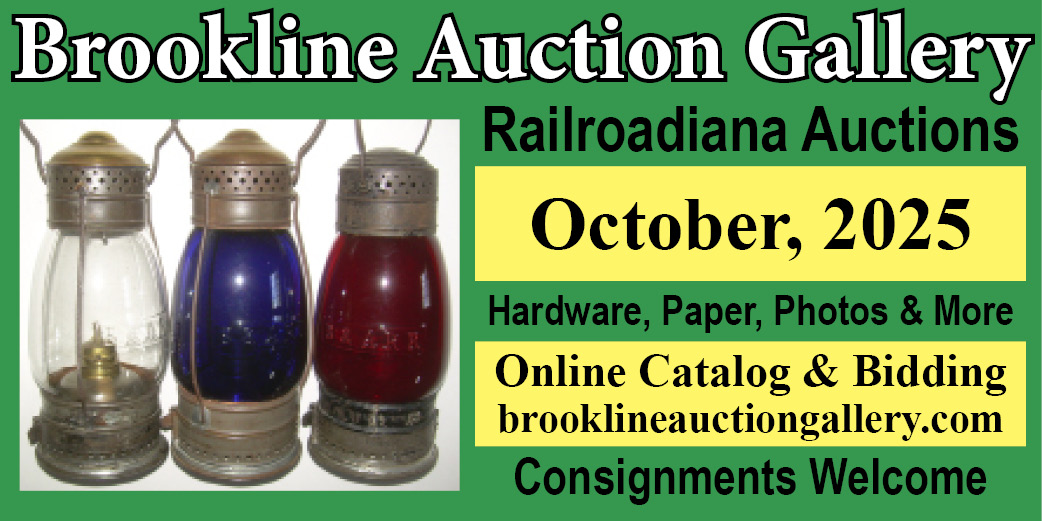 |
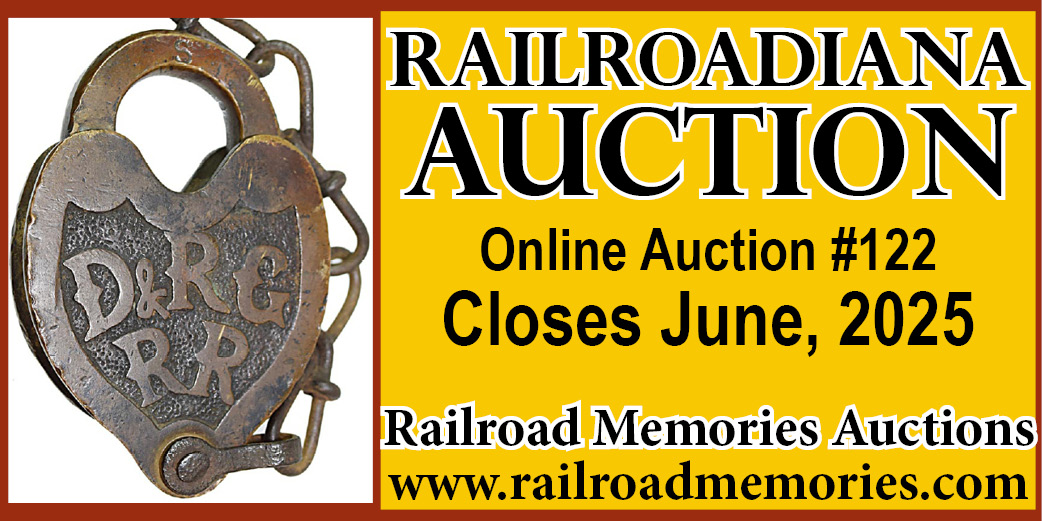 |
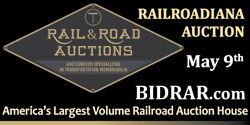 |
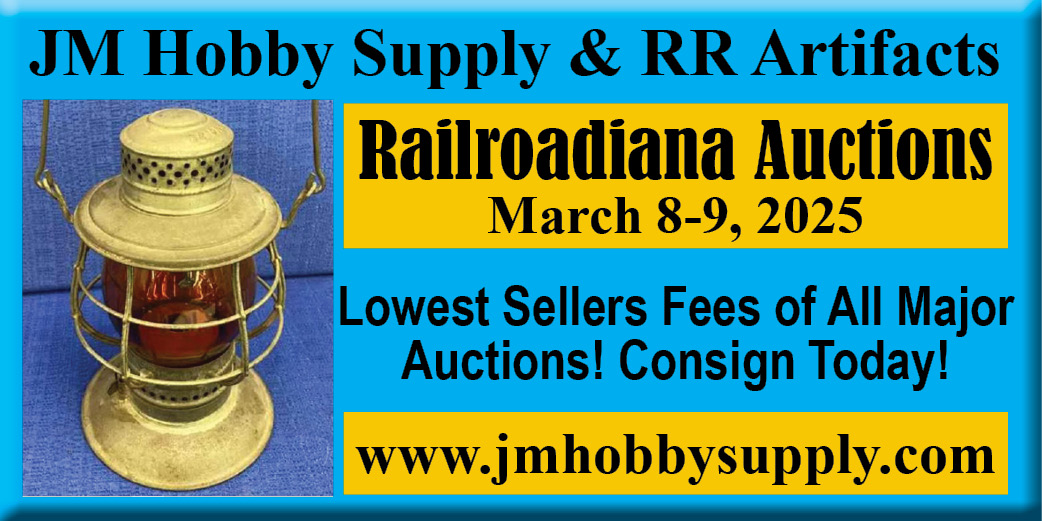 |
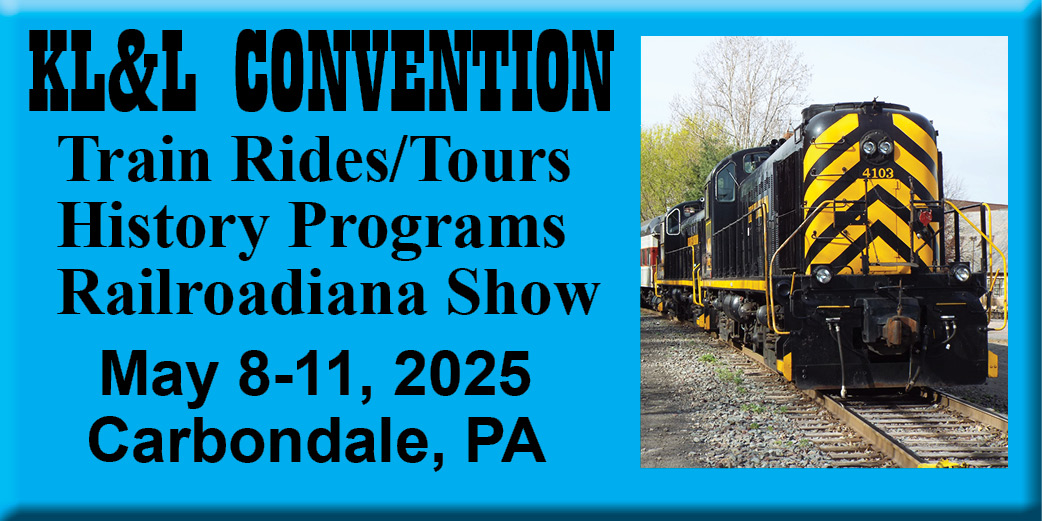 |
 |
 |
 |
 |
 |
 |
 |
 |
 |
 |
 |
 |
 |
 |
 |
 |
 |
 |
 |




